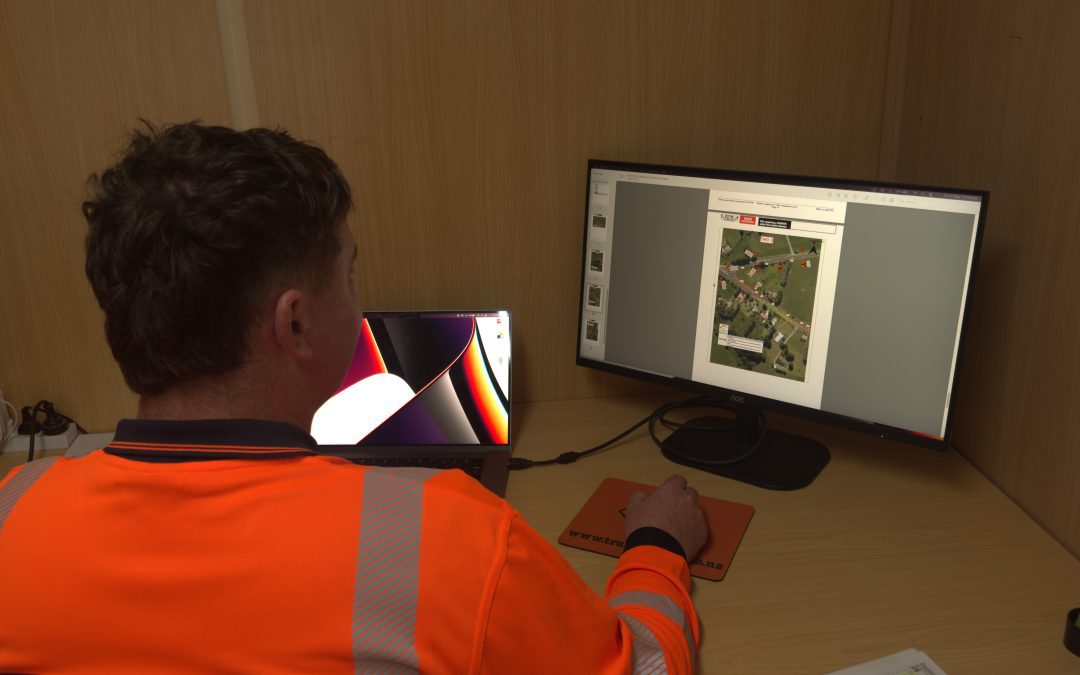Safetrak Northland – Traffic control is essential in maintaining the flow and order of traffic when there is construction going on. A traffic control plan designer is in charge of creating plans to ensure the flow of traffic is structured and does not interfere with the ongoing construction. There are a lot of qualifications and skills needed to be a traffic control plan designer.
What Does a Traffic Control Plan Designer Do?
If you have ever driven through a road construction site, you have probably seen signs, cones, barriers, and flaggers that guide you safely through the work zone. But have you ever wondered who decides where to place those traffic control devices and how to coordinate the traffic flow? That’s the job of a traffic control plan designer.
A traffic control plan designer is a professional who creates plans for temporary traffic management during road works, events, or emergencies. It analyses the site conditions, the scope and duration of the project, the expected traffic volume and speed, and the safety requirements for workers and road users. Based on this information, they design a layout of signs, signals, markings, devices, and personnel that will minimise disruption and ensure smooth and safe traffic movement.
It may work for a government agency, a contractor, a consultant, or a traffic control company. They may use software tools, such as AutoCAD or MicroStation, to create and modify their plans. They may also need to consult with engineers, project managers, site supervisors, and other stakeholders to coordinate their plans and obtain approvals. It must follow the relevant standards and regulations for traffic control in their jurisdiction, such as the Manual on Uniform Traffic Control Devices (MUTCD) in the United States.
It needs to have strong technical skills, attention to detail, problem-solving abilities, and communication skills. They also need to have a good understanding of traffic engineering principles, road design, traffic laws, and human factors. It typically has a degree or diploma in civil engineering, transportation engineering, or a related field. They may also need to have a certification or licence from a professional association or authority.
It plays an important role in ensuring the safety and efficiency of road users and workers during temporary traffic disruptions. By designing effective and appropriate traffic control plans, they help reduce congestion, delays, accidents, and environmental impacts.
If you want to become a traffic control plan designer in New Zealand, you might wonder what skills and qualifications you need to succeed in this role. It is responsible for planning, designing, submitting and overseeing temporary traffic management (TTM) services for various road projects, such as construction, maintenance, events or emergencies. TTM services ensure the safety of workers, road users and the public, as well as the efficiency and quality of the project.
Qualifications of an Effective Traffic Control Plan Designer
To become a traffic control plan designer in New Zealand, you need to have the following skills and qualifications:
-
- A good understanding of the Code of Practice for Temporary Traffic Management (CoPTTM), which sets out the standards and guidelines for TTM in New Zealand. You can access the CoPTTM online or attend training courses offered by NZ Transport Agency (NZTA) approved providers.
- A valid Site Traffic Management Supervisor (STMS) certificate, which demonstrates your competence in supervising TTM operations on all road levels. You can obtain an STMS certificate by completing a two-day course and passing a written exam. You need to renew your certificate every three years by attending a refresher course.
- Experience in using AutoCAD or similar software to design accurate and site-specific traffic management plans (TMPs). TMPs are drawings that show the layout of signs, cones, barriers and other devices that will be used to manage traffic during the project. You need to submit your TMPs to the relevant road controlling authority (RCA) for approval before starting the project.
- Good communication and interpersonal skills to liaise with clients, contractors, RCAs, workers and the public. You need to be able to explain your TMPs clearly and respond to feedback or queries promptly. You also need to be able to work well in a team and coordinate with other TTM staff.
- A high level of attention to detail and quality assurance to ensure your TMPs comply with the CoPTTM and meet the project requirements. You need to check your TMPs for errors or omissions before submitting them. You also need to monitor and review your TMPs during the project and make adjustments as needed.
- A commitment to health and safety and continuous improvement to minimise risks and hazards for yourself and others. You need to follow safe work practices and procedures at all times. You also need to keep up to date with the latest changes and updates in the CoPTTM and TTM industry.
- Becoming a traffic control plan designer in New Zealand can be a rewarding career choice if you enjoy working on different road projects and ensuring their safety and success. To find out more about this role, you can visit the websites of some of the leading TTM companies in New Zealand, such as Independent Traffic Control (iTraffic), Downer or Higgins.
Consult Safetrak Northland for Your Traffic Management Needs!
Safetrak Northland ensures road-safe traffic management as a trusted and capable traffic management group in New Zealand.
Safetrak Northland has been involved in traffic control for the past five years. We also offer other services like truck tipping, hydro excavation and cable locating. We’ve served a wide range of customers and clients over the years. It demonstrates the high calibre of our services, which our customers trust. Our team of traffic management professionals can help with all aspects of traffic management and control. From Cape Reinga to Whangarei, we serve a wide range of areas throughout New Zealand.
We prioritise safety, dependability, and making our customers happy. Contact us today, and we’ll help you with your traffic management needs!

